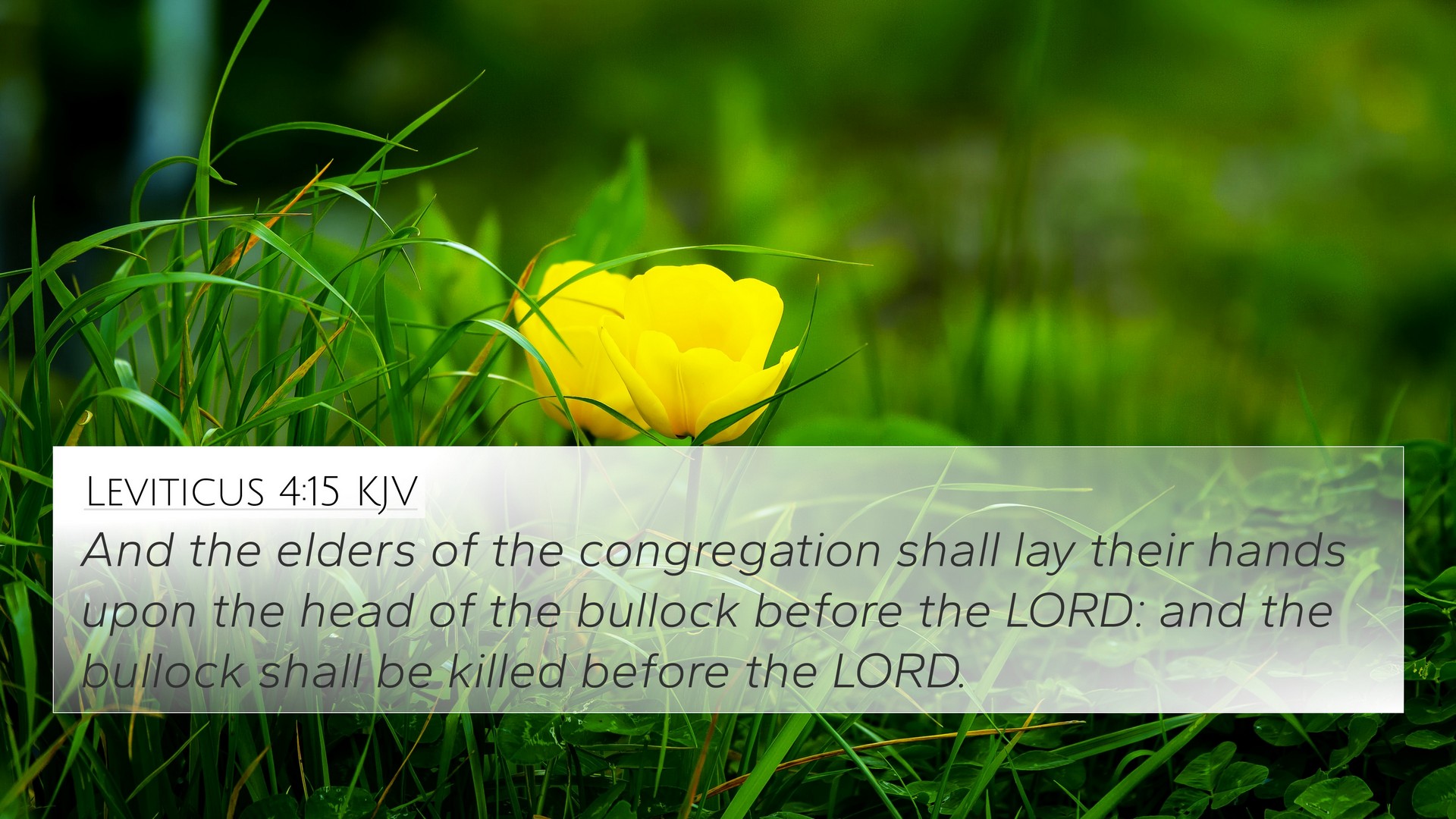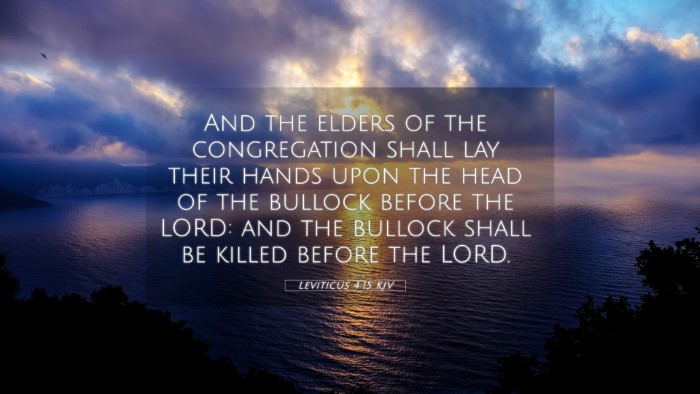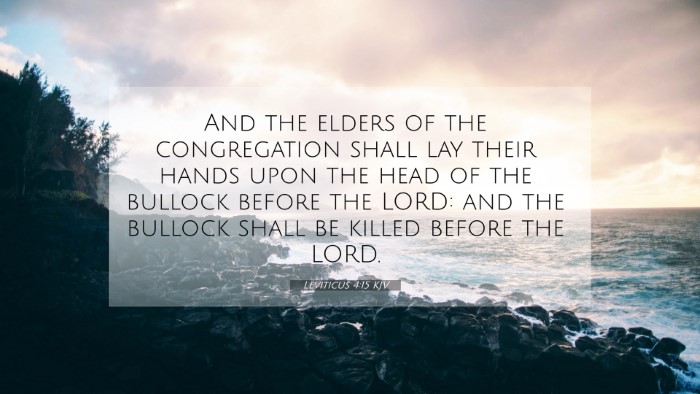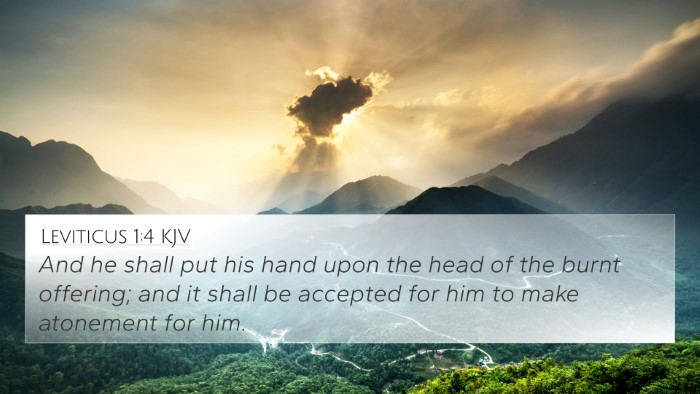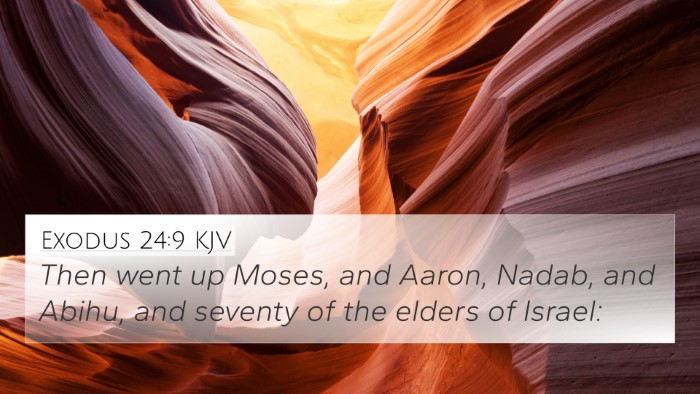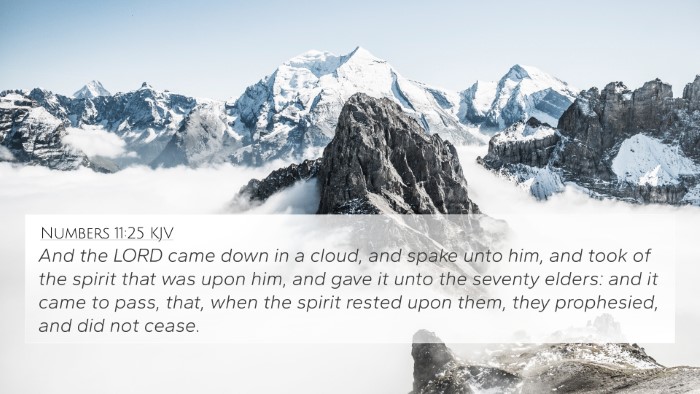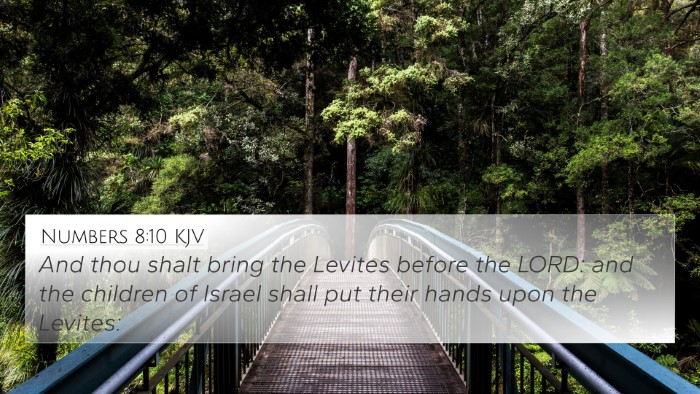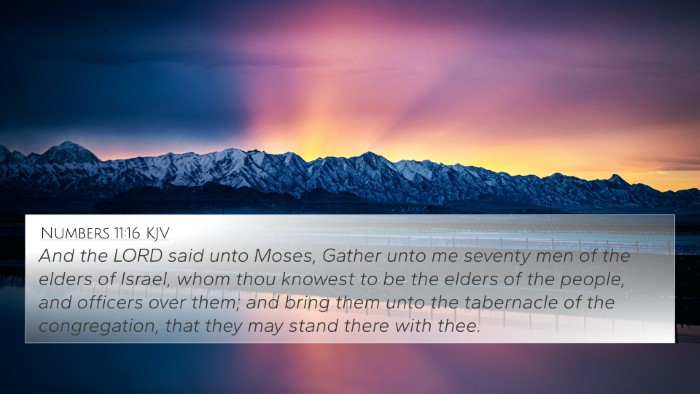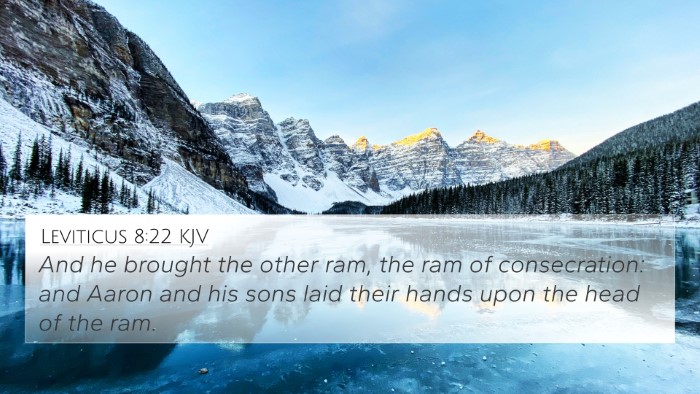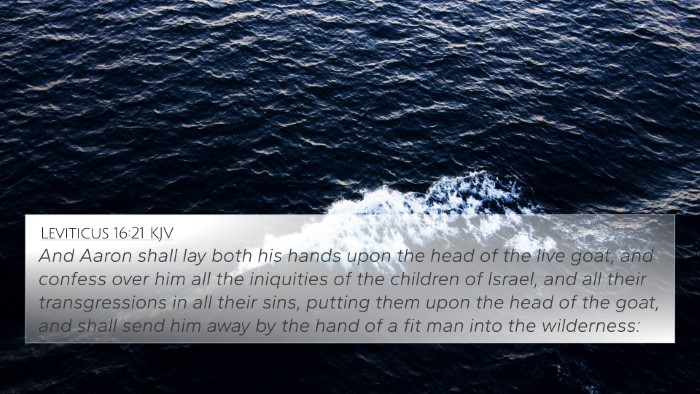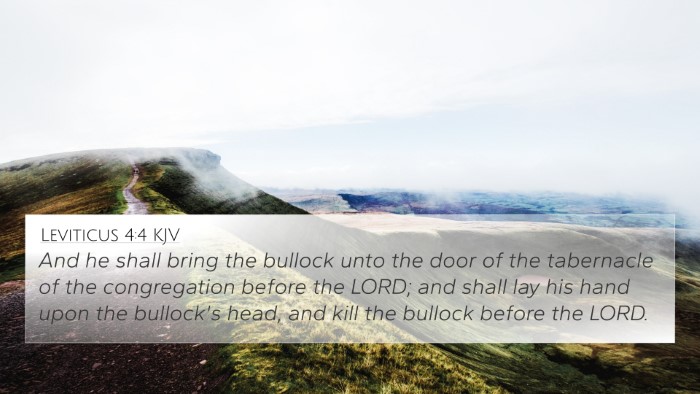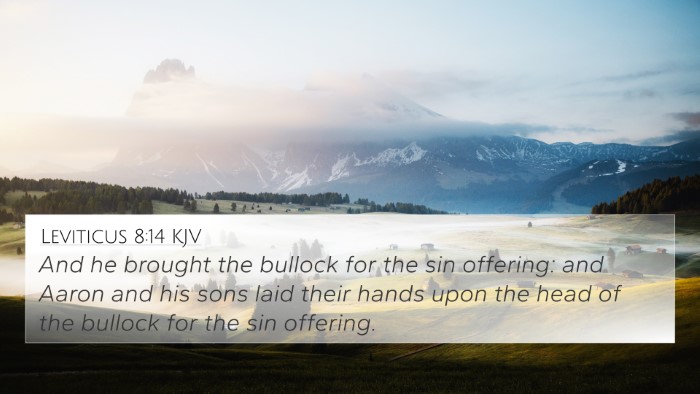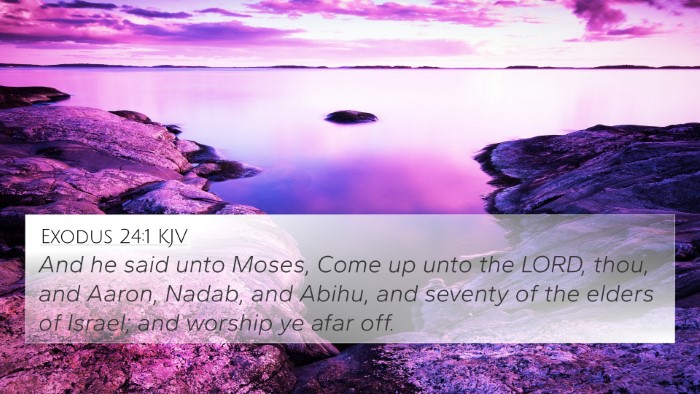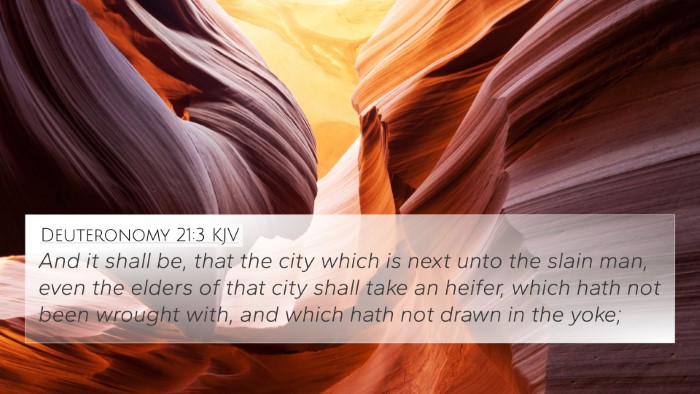Understanding Leviticus 4:15
Leviticus 4:15 presents a critical moment in the Levitical laws concerning sin offerings, particularly focusing on the role of the elders of the congregation in the offering of a sin sacrifice. This verse reads, “And the elders of the congregation shall lay their hands upon the head of the goat before the Lord; and the goat shall be killed in the place where the burnt offering is killed.”
Meaning and Interpretation
This verse highlights several key themes within the scope of Biblical understanding and atonement. It underscores the concept of communal responsibility in sin, the significance of the transference of sin through the laying on of hands, and the necessity of the death as a means of atonement.
Key Insights from Public Domain Commentaries
-
Matthew Henry:
Matthew Henry emphasizes the communal aspect of sin, suggesting that the elders represent the people, acknowledging corporate sin and the need for atonement. He notes the act of laying hands is symbolic, signifying the transfer of guilt from the people to the sacrifice.
-
Albert Barnes:
Albert Barnes provides insight into the ritualistic nature of the sin offering. He points out that the act of killing the goat in the same place as the burnt offering serves as a reminder of the seriousness of sin and the need for sacrificial atonement, highlighting God's mercy intertwined with justice.
-
Adam Clarke:
Adam Clarke elaborates on the significance of the elders' involvement, portraying it as a serious duty that underscores the weight of leadership in spiritual matters. He also notes that this process reflects both individual and collective acknowledgment of sin, which must be dealt with appropriately.
Cross-References
This verse connects with several other passages throughout Scripture, serving as part of the broader theme of atonement and the sacrificial system. Here are some notable verses:
- Leviticus 16:21 - The similar act of laying hands on the scapegoat as a symbol of transferring the sins of the people.
- Exodus 29:10-14 - The requirement of a sin offering for atonement, highlighting the need for sacrifice in dealing with sin.
- Hebrews 9:22 - "Without the shedding of blood, there is no remission of sins," reinforcing the necessity of sacrifice for atonement.
- Romans 3:25 - Christ as the propitiation through faith in His blood, illustrating the ultimate fulfillment of the sacrificial system.
- 1 Peter 2:24 - Christ bearing our sins in His body, connecting the Old Testament sacrificial system with New Testament teachings.
- Isaiah 53:6 - The Lord laying on Him the iniquity of us all, aligning the concept of substitution in atonement.
- Leviticus 1:4 - The laying on of hands in burnt offerings, demonstrating a common practice within sacrificial rituals.
- James 5:16 - The importance of confession and prayer among believers, akin to the communal responsibility observed in Leviticus.
- Galatians 3:13 - Christ redeeming us from the curse of the law, linking the themes of Old and New Testament sacrificial practices.
- Matthew 26:28 - Jesus proclaiming His blood as the new covenant, drawing a parallel with the sacrificial system established in Leviticus.
Thematic Connections
The thematic significance of Leviticus 4:15 extends into various areas of Christian teaching, emphasizing:
-
Atonement: Understanding the role of sacrifice in reconciling sinful humanity with God remains central in both Old and New Testament teachings.
-
Leadership and Responsibility: The elders' role in leading sin offerings highlights scriptural references to the weight of leadership in spiritual communities.
-
Community Sin: The acknowledgment of sin as a communal issue necessitating corporate repentance and atonement is a recurring theme in the Scriptures.
Using Cross-References for Deeper Understanding
Engaging with cross-references in Leviticus 4:15 allows believers to deepen their understanding of Biblical texts. Here are some practical tools and methods for Bible cross-referencing:
- Bible Concordance: Utilize a concordance to find verses related to key terms in Leviticus 4:15 for deeper insight.
- Bible Cross-Reference Guide: Books specifically designed for cross-referencing can help discover thematic links.
- Cross-Referencing Bible Study: Implementing structured study methods that focus on connections between verses enhances comprehension.
- Tools for Cross-Referencing: Digital tools and apps allow for easier navigation through Biblical texts.
- Comprehensive Bible Cross-Reference Materials: Consider using extensive references or study Bibles that highlight connections between scriptures.
Conclusion
The study of Leviticus 4:15 provides valuable lessons concerning sin, sacrifice, and communal responsibility. By examining this verse through the lenses provided by public domain commentaries and connecting it to cross-referencing other scripture passages, believers can gain profound insights into God's desire for atonement and reconciliation. As one dives deeper into the Scriptures and engages in cross-referencing studies, the holistic understanding of Biblical themes and connections enhances spiritual growth and understanding.
